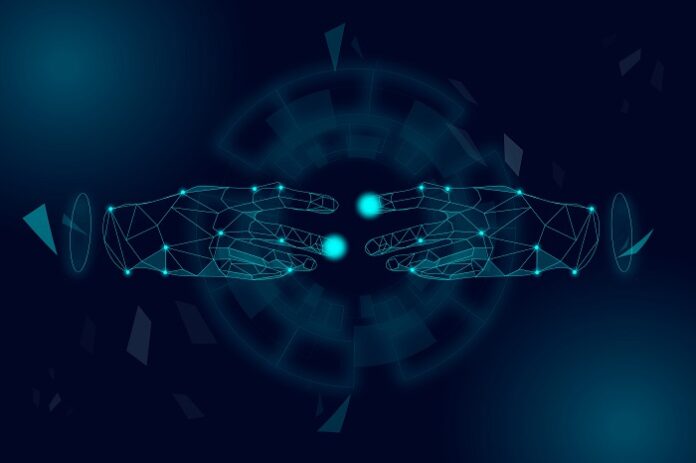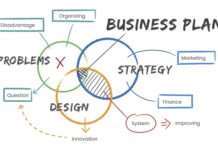Digital twin technology, an innovative product of the Fourth Industrial Revolution, is transforming various industries. It is doing so by allowing for more efficient decision-making and improved productivity. The concept of a “digital twin” refers to a virtual replica of a physical entity. It enables real-time tracking and prediction of its performance. Additionally, by bridging the physical and digital worlds, this technology has found widespread application across sectors. These sectors include manufacturing, healthcare, agriculture, and urban planning. Understanding digital twin development can equip businesses to harness their full potential. Further gaining a competitive edge in today’s digital age.
The Concept of a Digital Twin
A digital twin is a dynamic virtual replica of a physical object, system, or process. Hence, the design simulates its real-world counterpart. By gathering data through sensors embedded in the physical entity, a digital twin reflects the status, working conditions, and even the future performance of its physical twin in real-time.
Further, the concept of a digital twin was born in the early 2000s at NASA. It is here where it was used to manage and monitor spacecraft. With advancements in technology, particularly the advent of IoT, AI, and big data, the concept has rapidly evolved and gained widespread commercial traction.
To simplify, imagine a digital twin as a bridge between the physical and digital realms. It works by continuously learning from multiple sources, including real-time data, historical data, and predictive algorithms. This gathered intelligence enables us to test scenarios, foresee issues, and explore potential solutions. This leads to better decision-making and enhanced operational efficiency.
Components of a Digital Twin
A digital twin primarily comprises three integral components: the physical product, the virtual product, and the interlinking data.
The physical product: This is the real-world entity being replicated. Moreover, it could be a simple object like a machine, or a complex system like an entire manufacturing plant. Also, it’s equipped with sensors to capture various data points reflecting its state and performance.
The virtual product: This is the digital counterpart, an accurate real-time simulation of the physical product. So, it’s designed using advanced software that can process and analyze data to replicate the behavior and predict the future performance of the physical entity.
The data connection: This is the link between the physical and the virtual entities. It involves two-way communication where data flows from the physical to the virtual for analysis and then from the virtual back to the physical to influence actions.
Hence, each component plays a crucial role in creating a functional digital twin, allowing for real-time monitoring, predictive analytics, and potential troubleshooting, thereby leading to enhanced operational efficiency and strategic decision-making.
Benefits of Using Digital Twins
Digital twins offer substantial advantages across various fields, revolutionizing the way businesses operate and make decisions.
Improved decision-making: Digital twins provide a comprehensive, real-time view of systems, helping organizations make more informed decisions. For example, Siemens uses digital twins in their gas turbine operations to simulate and evaluate different scenarios, thereby making optimal decisions for maintenance and operations.
Increased efficiency: By simulating real-world systems, digital twins enable companies to identify inefficiencies and optimize processes. An example is GE, which employs digital twins for its wind turbines, helping them maximize energy output and reduce maintenance costs.
Enhanced product performance: Digital twins facilitate the testing of design alterations and potential improvements without risking actual operations. This was exemplified when NASA used digital twins to identify and fix potential issues in their Mars Rover before launch, significantly boosting its performance.
Applications of Digital Twins
Digital twin technology is transforming various sectors. In manufacturing, companies like Siemens employ digital twins to simulate production processes, optimizing efficiency and reducing downtime. Additionally, in healthcare, digital twins of human organs are being developed, with companies like BioModel Analytics creating digital twins of lungs to personalize treatment for respiratory conditions.
Urban planning also benefits from this technology. For instance, the city of Singapore has created a comprehensive digital twin, ‘Virtual Singapore’, to simulate urban scenarios for planning and decision-making. Each application demonstrates the versatility and potential of digital twin technology in driving innovation and enhancing performance across industries.
Conclusion
To conclude, digital twin technology, a virtual replica of a physical entity, offers a game-changing approach to managing and improving systems in diverse industries. As the use of digital twins becomes increasingly mainstream in areas like manufacturing, healthcare, and urban planning, understanding the fundamentals of this technology becomes crucial. By fully leveraging its potential, businesses can unlock new levels of operational efficiency and innovation, propelling them into a future defined by digital transformation.





